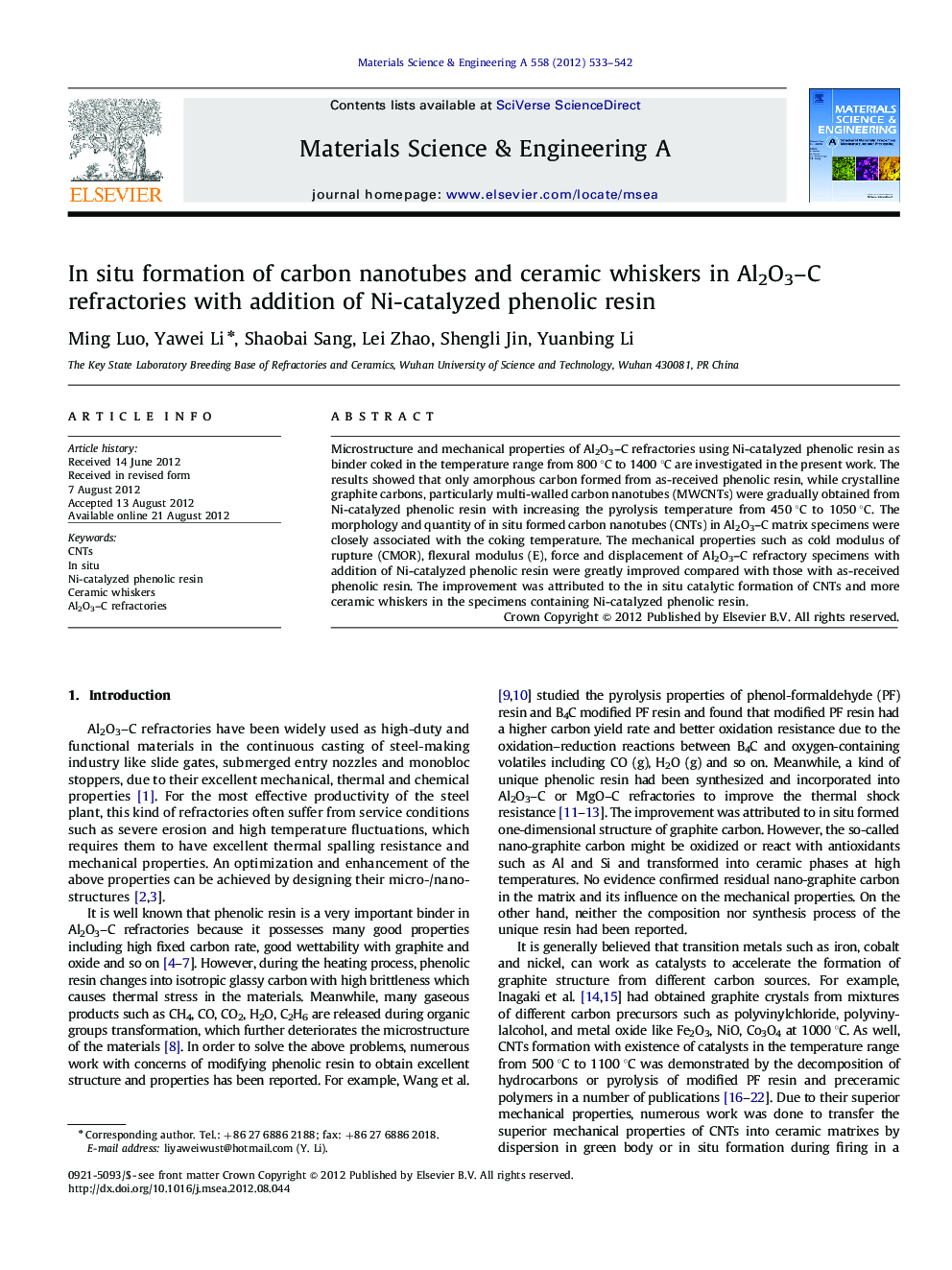| Article ID | Journal | Published Year | Pages | File Type |
|---|---|---|---|---|
| 1576800 | Materials Science and Engineering: A | 2012 | 10 Pages |
Abstract
Microstructure and mechanical properties of Al2O3-C refractories using Ni-catalyzed phenolic resin as binder coked in the temperature range from 800 °C to 1400 °C are investigated in the present work. The results showed that only amorphous carbon formed from as-received phenolic resin, while crystalline graphite carbons, particularly multi-walled carbon nanotubes (MWCNTs) were gradually obtained from Ni-catalyzed phenolic resin with increasing the pyrolysis temperature from 450 °C to 1050 °C. The morphology and quantity of in situ formed carbon nanotubes (CNTs) in Al2O3-C matrix specimens were closely associated with the coking temperature. The mechanical properties such as cold modulus of rupture (CMOR), flexural modulus (E), force and displacement of Al2O3-C refractory specimens with addition of Ni-catalyzed phenolic resin were greatly improved compared with those with as-received phenolic resin. The improvement was attributed to the in situ catalytic formation of CNTs and more ceramic whiskers in the specimens containing Ni-catalyzed phenolic resin.
Related Topics
Physical Sciences and Engineering
Materials Science
Materials Science (General)
Authors
Ming Luo, Yawei Li, Shaobai Sang, Lei Zhao, Shengli Jin, Yuanbing Li,
